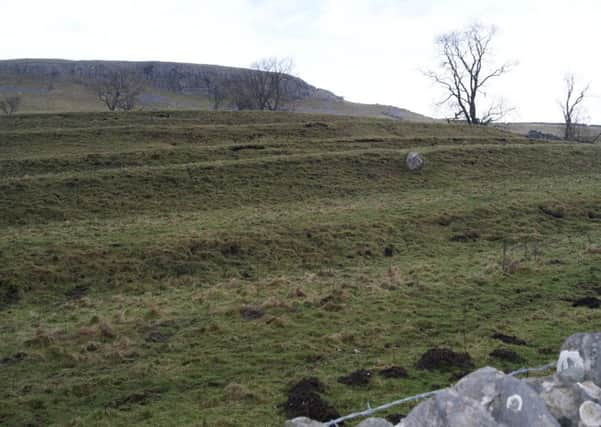Countryside evidence remains of '˜shelving' techniques to grow food


Last winter, though, I spotted something rather different. In the low lying fields flood waters stuck around a lot longer in the furrows than on the exposed ridges. Some of those were left standing high and dry in neat little lines separated by temporary ditches.
This gives us one of the clues as to why they were created. Field systems of ridge and furrow aren’t just there because that was the pattern that naturally emerged from ploughing methods back in the days before fields were enclosed. They are also there because they give an advantage to people trying to scratch a living from the soil in a part of the country that gets a lot of rain but can also experience the odd dry spell.
Advertisement
Hide AdAdvertisement
Hide AdOn wet ground it is a lot better to have your crop planted on the top of a small ridge and to watch the water drain away via an adjoining furrow than it is to have a flat field where everything gets drowned out at once. Planting on a ridge also encourages roots to grow downwards to find the moisture and so can be just as helpful in a dry spell as it was in a wet one.
Small ridges of land provided a very efficient way of farming in the days when families worked in teams to grow cereals and vegetables for their own living. Larger fields, modern ploughs and the demand for sheep from the growing wool industry may have put an end to this way of doing things but that doesn’t mean it wasn’t a good solution for the time when it was used.
Times change and so do methods of farming and the appearance of the countryside. If you look hard across the Yorkshire Dales you can find another very different field system. It is one that must have taken a great deal of labour to create. The Dales contains several wonderful examples of places where our ancestors built terraces on hillsides so they could grow arable crops more successfully. One of the best places to look for them is on the slopes of some of the less accessible Dales.
Before I moved back up north over 20 years ago I always thought terraces were a feature of agriculture only in places like South East Asia where they are used to grow rice. Yet what works today in exotic locations also worked just as well in the past on a smaller scale in Yorkshire. Put your crops on a steep hillside and there is a good chance they will wash away with the first rainfall along with the even more precious soil. Shape the hillside into a series of terraces and you hold in any moisture a lot longer at the same time as giving the crops a secure place to grow and prosper.
Advertisement
Hide AdAdvertisement
Hide AdHistorians call these short expanses of terracing strip lynches and there are some interesting variations in theories as to when they were created. One of the most plausible is that they were constructed during a growth in population that took place prior to the first wave of the Black Death. Land was at a premium and if you wanted to farm more land then you had to go to the marginal areas and put in the back breaking work of levelling small plots before you could seriously expect to increase your food supply.
I like to think it is also possible that some of the lynches may be even older. If people could build stone circles 4,000 years ago, why would they lack the ability to move some soil to grow more of the things they liked to eat?
Dating is hard on such structures so this theory may have to remain wishful thinking. Either way if you have a steep bit of land in your back garden it is never a bad idea to copy the old techniques. Terracing is still a first-class way to create a fantastic garden.
I’m less sure about putting the ridge and furrow model to the test. I can’t see it going down well if I dug up the lawn and replaced it with a set of ridges to improve the drainage.